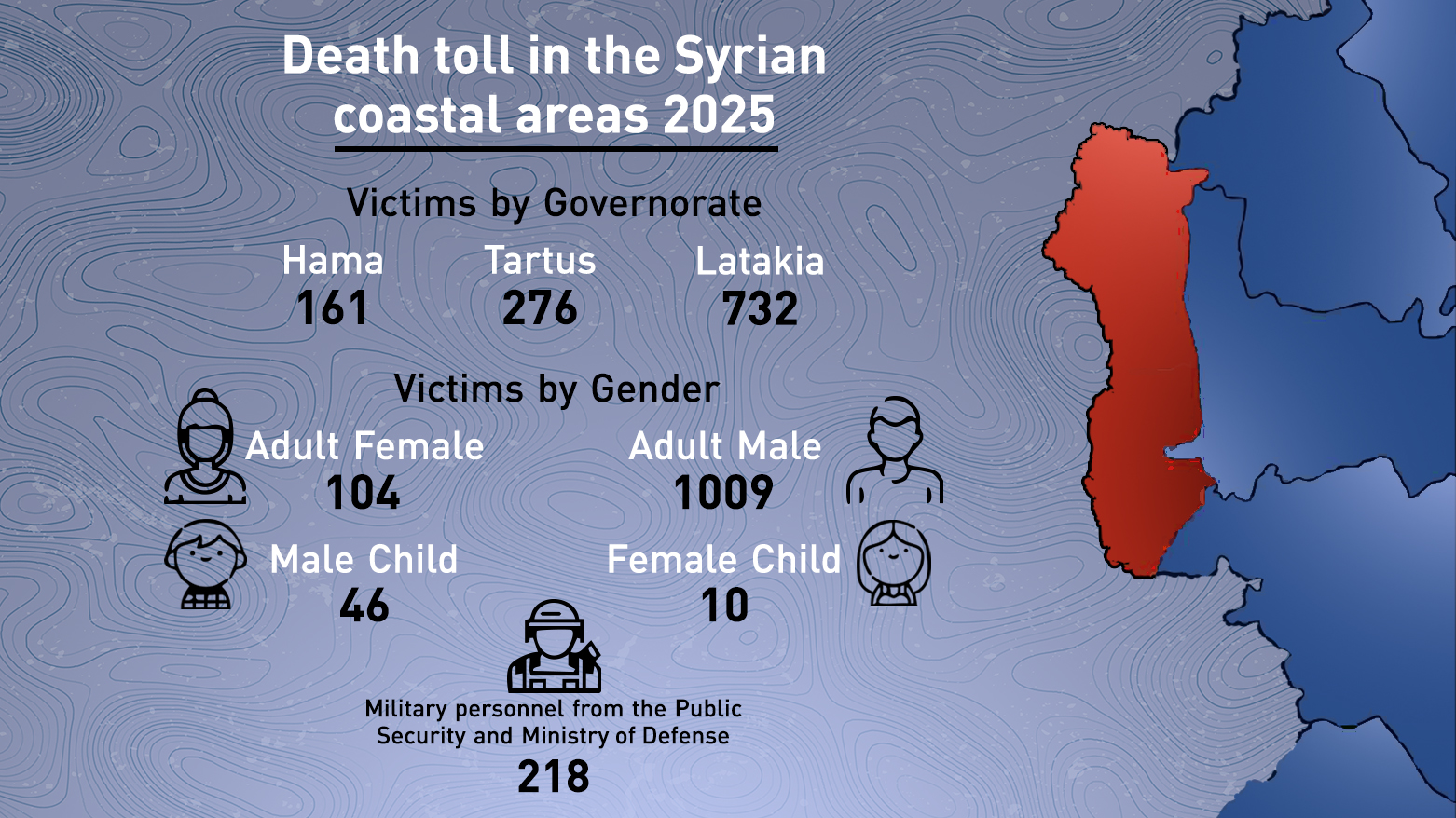Syria’s Coastline Transforms into retaliation Battleground as Alawites Face Attacks
The Annual Threat Assessment of the U.S. Intelligence Community published on March 2025, paints a grim picture of Syria’s future.

By Ahora Qadi
ERBIL (Kurdistan 24) – Syria’s coastal provinces, once considered strongholds of stability, have become the epicenter of escalating sectarian violence, with Alawite civilians increasingly targeted in brutal attacks. The latest assault, which left six dead, including a 12-year-old child, has ignited fears of further bloodshed amid the country’s ongoing fragmentation.
The killings gained widespread attention after activists shared an image—also reported by the Syrian Observatory for Human Rights (SOHR)—of the slain child, who was killed on the first day of Eid al-Fitr. The image, showing a makeshift nylon rope used to hold up his oversized pants, became a symbol of the extreme poverty afflicting Syria’s coastal communities.
While some social media users questioned the image’s authenticity, independent verification by Kurdistan 24’s fact-checking team confirmed that it was recent and had not been previously published.
Public Security Vows Accountability
In response to the attack in the village of Harf Bin Namra in rural Baniyas, northwest Syria, the Public Security Directorate vowed to hold the perpetrators accountable. Authorities classified the killings as a crime "disturbing civil peace" and announced the arrest of two suspects.
A senior Tartous security official, speaking in a video released on the governorate’s Facebook account, stressed that "the criminals do not represent the Syrian state." Yet, these assurances have done little to quell residents’ fears, as many worry sectarian tensions could escalate.
Amid the turmoil, Rami Abdulrahman, Director of the Syrian Observatory for Human Rights (SOHR), spoke to Kurdistan 24, welcoming a deal between the Syrian Democratic Forces (SDF) and Damascus to ensure security and administrative stability in Aleppo’s Kurdish-majority districts, Sheikh Maqsoud and Ashrafieh.
"This is a very positive step for the Kurdish neighborhoods," Abdulrahman said. "The hope is that these understandings will be long-term rather than temporary measures to ease tensions."
However, he warned against using the agreement to divert attention from ongoing atrocities in Syria’s coastal regions, stressing that all peace efforts must serve the Syrian people’s broader interests—not act as political cover for continued violence.
Mass Displacement Amid Fear of Renewed Attacks
The attack on Harf Bin Namra was not an isolated incident. According to sources contacted by Kurdistan 24, entire families from the surrounding villages of Balghuns, Batla, and Deir al-Shibl fled to nearby forests and mountains, fearing further violence. The mass displacement follows a series of deadly events along the Syrian coast, where, between March 6-10, at least 1,169 civilians were killed, as reported by the Syrian Center for Media and Freedom of Expression.
According to a report issued by the Syrian Center for Media and Freedom of Expression, 732 were killed in Latakia, 276 in Tartous, and 161 in Hama. Among them were 103 women and 52 children, along with 218 members of the public security forces. The surge in violence coincided with military operations launched by the newly established Syrian government in response to a reported "mutiny" by remnants of the ousted Assad regime.
HTS Gains Control as U.S. Intelligence Warns of Resurgence of Jihadist Groups
The Annual Threat Assessment of the U.S. Intelligence Community published on March 2025, paints a grim picture of Syria’s future. Following the fall of Bashar al-Assad’s regime, the opposition—led by Hay’at Tahrir al-Sham (HTS), a group formerly affiliated with al-Qaeda—has struggled to consolidate power, creating a security vacuum that risks fueling a resurgence of ISIS and other extremist factions.
While HTS claims to be fostering an inclusive governance model, intelligence reports indicate that its forces, alongside Hurras al-Din and other jihadist groups, have engaged in sectarian killings, particularly against Alawite and Christian civilians. In March alone, more than 1,000 people were killed in extrajudicial executions across northwestern Syria.
Despite public claims of moderation, HTS’s leadership remains under scrutiny, with Israeli officials warning that the group’s long-standing hostility toward Israel has not changed. Furthermore, divisions within the broader jihadist movement threaten to plunge Syria into deeper chaos, as groups like ISIS openly oppose HTS’s governance and are reportedly planning attacks to destabilize its authority.
Concerns Over the Future of Syria’s Minorities
As violence spreads along Syria’s coastline, human rights organizations stress that these killings are not random but part of a broader pattern of sectarian targeting. The Syrian Center for Media and Freedom of Expression warns that the recent massacres underscore the fragility of Syria’s new political order, stating:
"These tragic events are not isolated incidents but clear evidence of Syria’s ongoing instability, shaped by decades of repression and systematic violations."
The organization called for a comprehensive justice framework to break the cycle of violence, emphasizing the need for legal accountability, conflict resolution, and genuine reconciliation to prevent future atrocities.
